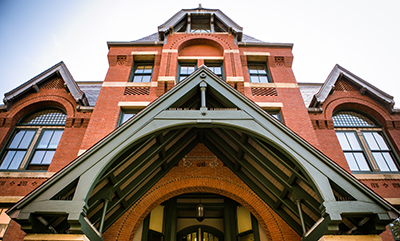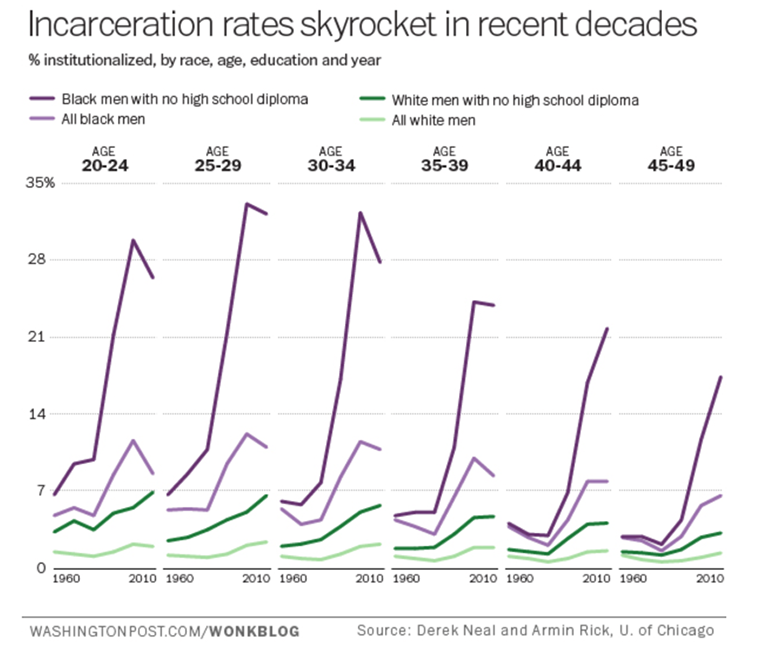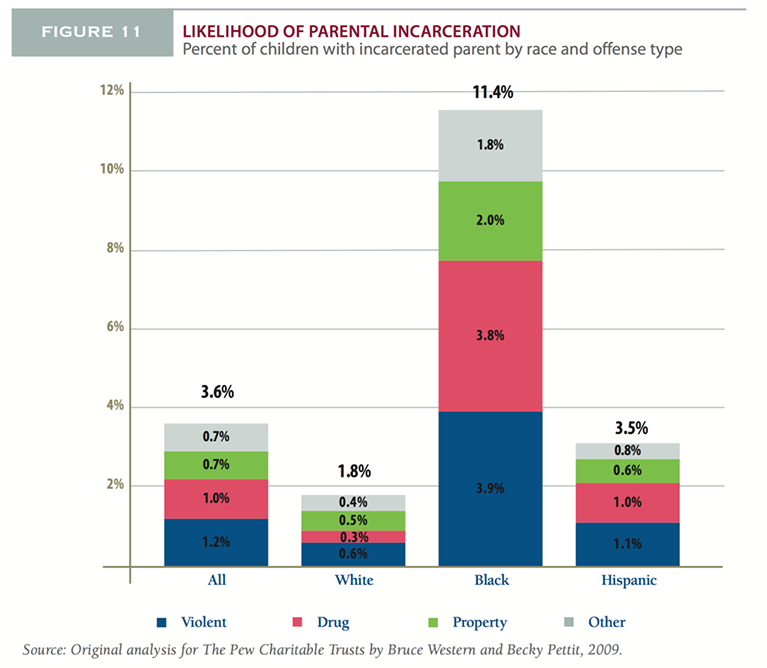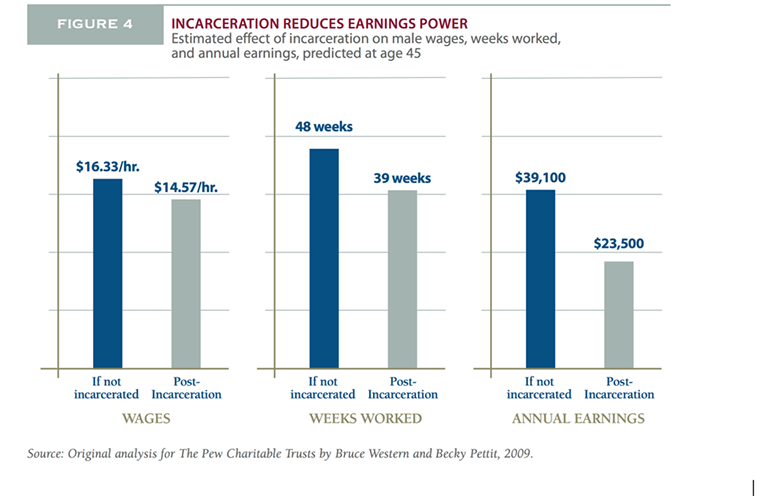Summary of the Black Family in the Age of Mass Incarceration
Families and the Furnishings of Mass Incarceration.
 Today'due south Dean's Note was originally meant to run final weekend, on Male parent's Day, but was preempted by our annotate on the horror in Orlando. We therefore turn from the problem of gun violence and hate to another harmful element in American order: mass incarceration.
Today'due south Dean's Note was originally meant to run final weekend, on Male parent's Day, but was preempted by our annotate on the horror in Orlando. We therefore turn from the problem of gun violence and hate to another harmful element in American order: mass incarceration.
Father's Day represents a natural touchpoint to reflect on the influence a parent has on the life of a child. Parents tin help determine everything from a child'due south eating habits, to their sleep patterns, to their familiarity with the types of basic, health-centered best practices that, once mastered, safeguard well-being throughout life. Given the central function a parent plays in helping a young person develop into a operation and healthy developed, information technology makes sense that the lack of a parent would have a similarly profound upshot. With this in mind, I would similar to focus on what has been an especially subversive force in American family life, forcing many parents to raise children without the support of a spouse: our land's tragic history of mass incarceration.
I have written previously well-nigh incarceration; however, I find its influence on families runs deep enough to warrant special consideration. A caveat, so, earlier I brainstorm. In that location is a danger of oversimplifying the consequence of mass incarceration and its upshot on families. We cannot assume that a child would always be meliorate off if her incarcerated parent returned to play a part in her life, nor tin can we assume that the children of single parents are invariably at a disadvantage, although data suggest that they oftentimes are. Notwithstanding, the number of incarcerated people in the United States is so loftier—driven in no small part by men incarcerated for many years, frequently for irenic drug offenses—that it is a brusk and piece of cake step towards recognizing that mass incarceration in this country is a true epidemic, and its effects are pervasive. Perhaps the two most striking qualities of mass incarceration are the rate at which it has accelerated in recent decades and the degree to which it disproportionately affects black men (Figure 1).

Pew Research Center. Chart of the Week: The black-white gap in incarceration rates. 2016 Source: http://world wide web.pewresearch.org/fact-tank/2014/07/18/nautical chart-of-the-week-the-black-white-gap-in-incarceration-rates/.
An estimated 2.7 million American children have an incarcerated parent. The problem has go then mutual that Sesame Street recently introduced a character with an incarcerated parent, to teach children how to cope with this difficult situation and the shame that can accompany information technology. Even worse, the data propose an extraordinary racial disparity: 11.4 percent of black children have an incarcerated parent, 3.5 percent of Hispanic children, and 1.8 percent of white children. Non-trigger-happy offenses comprise 2-thirds of the convictions reflected by these incarceration rates, with about 1-quarter coming from drug offenses (Figure 2).

The Pew Charitable Trusts, 2010. Collateral Costs: Incarceration'southward Effect on Economic Mobility. Washington, DC: The Pew Charitable Trusts.
What are the effects of incarceration on families? Pew Research Center data indicate that more than two-thirds of incarcerated men had been employed prior to serving their sentence, and that almost half had lived with their children before going to prison house. Additionally, more than than half of imprisoned parents were the master earners supporting their children. When a wage-earning parent is suddenly removed from the scene, the brunt falls on the remaining parent to provide for the children, pressuring families economically. This can continue fifty-fifty after the absent parent has been released from confinement—incarceration reduces earning ability, compounding the financial challenges affected families can face (Figure 3).

The Pew Charitable Trusts, 2010. Collateral Costs: Incarceration's Effect on Economic Mobility. Washington, DC: The Pew Charitable Trusts.
Beyond the firsthand effects of incarceration on the families of those serving sentences, and the imprisoned individuals themselves, in that location tin can also be negative consequences for entire communities. A 2015 written report found that those living in neighborhoods with high incarceration rates are more likely to come across the criteria for a major depressive disorder or a generalized feet disorder than individuals living in neighborhoods with lower incarceration rates. When we view incarceration as a purely individual risk factor, primarily the concern of the incarcerated and their immediate families, nosotros miss an equally important and larger picture. In places with high incarceration rates, incarceration has get role of the very ecology of communities, shaping health in a style more akin to other environmental determinants than a random hardship affecting only a select, unlucky few.
While the complication of this trouble may exist daunting, its very scope ways that there are many areas where we in public health can brand a departure. An platonic solution would be, of grade, to bring an end to the "prison house-industrial complex" that has so fundamentally affected the lives of so many. All the same, in the short-term, apart from our inquiry and scholarship, there are 2 key areas where public health can assistance. Start, we can improve matters through clear policy and translational work. Central to the question of policy is the practice of assigning mandatory minimum sentences to non-violent drug offenders. When the penalisation is so disproportionate to the crime, it does null to assist lodge or promote rehabilitation—it is, in fact, a distortion of justice. It falls well within the responsibility of public health to be clear and present in pushing against policies that exacerbate social forces that damage the health of populations—like mass incarceration. This ways robust communication efforts, and engaging with the media to inform the public of incarceration's deleterious issue on the well-being of communities at big. We must also exist clever about how we help tell the stories of incarceration and its consequences, generating empathy and nudging a status quo that has long been unacceptable.
Second, we take a responsibility to collaborate with partners within the public health community whose piece of work tackles the downstream consequences of mass incarceration. When prisoners are released, programs and resources that allow successful reengagement with society are disquisitional. Every bit Kansas Governor Sam Brownback once said, "Everybody—the ex-offender, the ex-offender'south family and society at big—benefits from programs that equip prisoners with the proper tools to successfully reintegrate into life exterior of the prison walls." While not upstream solutions, social programs that help families of the incarcerated, particularly the children of prisoners, stand to do much good. Through our events and our scholarship, we are positioned to raise the profile and numbers of these organizations by communicating the real, quantifiable health hazards of incarceration, and the potential that this work—coupled with foundational transformation in our national policy-scape—has to move united states of america to a place where far fewer fathers are incarcerated on Father'southward 24-hour interval.
I hope everyone has a terrific week. Until adjacent week.
Warm regards,
Sandro
Sandro Galea, Doc, DrPH
Dean and Robert A. Knox Professor
Boston Academy School of Public Health
Twitter: @sandrogalea
Acknowledgement: I am grateful to Eric DelGizzo for his contributions to this Dean'due south Note.
Previous Dean's Notes are archived at: https://world wide web.bu.edu/sph/tag/deans-note/
Explore Related Topics:
pattersonchen1991.blogspot.com
Source: https://www.bu.edu/sph/news/articles/2016/families-and-the-effects-of-mass-incarceration/
0 Response to "Summary of the Black Family in the Age of Mass Incarceration"
Post a Comment